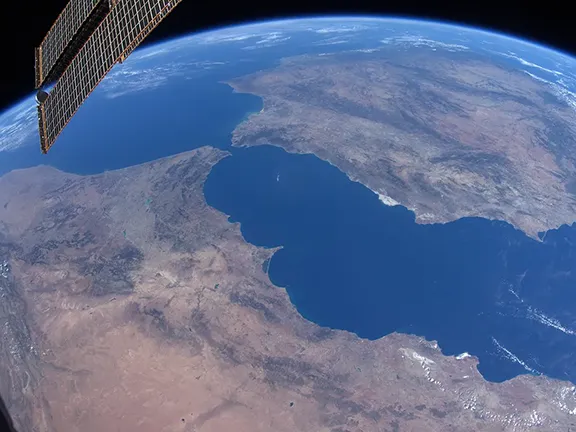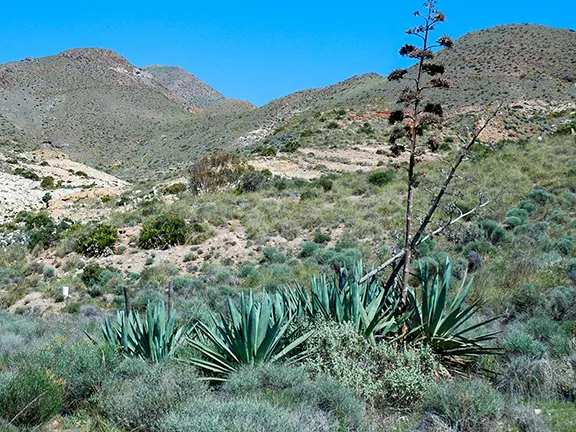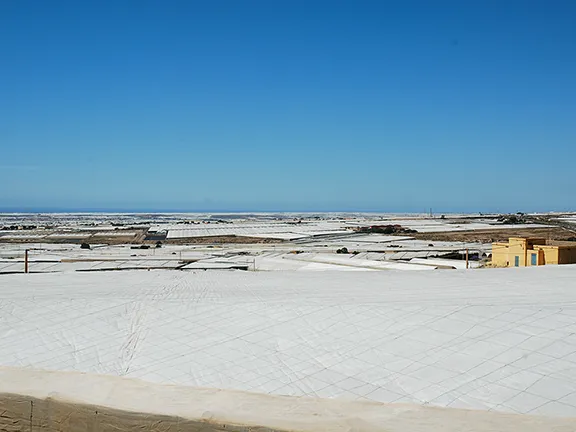The Plastic Revolution in Almeria
Progress at a Cost - Exploitation of Migrant Workers
Migrant workers in the agricultural sector have long been exploited by employers who offer low wages, sometimes refusing to pay wages at all, extreme and sometimes hazardous working conditions and substandard housing. The Almeria Model depends on migrant workers and gradually, conditions are improving.
By Nick Nutter on 2023-08-3 | Last Updated 2025-05-20 | The Plastic Revolution in Almeria
This article has been visited 3,241 times

El Ejido Riots - February 2000
Although Almeria has a long history of using migrant labour for seasonal work such as sowing and harvesting, it was during the 1990s that the demand for cheap labour took off.
There were three distinct periods of immigration in Almeria.
Do you enjoy my articles? For your reading pleasure, this website does not carry third party ads. You could help me write more articles by buying me a cup of coffee.
Immigration from within the local area
The first period from 1954 to 1970 was characterized by the establishment of new farms in new population centres. Most immigrants hailed from neighbouring municipalities.
The Almerian Miracle
During the second period from 1971 to 1989, migrants came from other regions of Spain that were attracted by the 'Almerian miracle'.
Migration from other countries


Population Almeria and Immigration figures 2021
It was not until the third migratory period that began in the 1990s that migrants from other countries arrived in large numbers. The full integration of Spain in the European Union in 1993 brought a spectacular growth in the horticultural sector that attracted foreign populations. Information from the Ministry of Interior shows that from the mid 1990s the increase of international residents in Almeria became much greater than in the rest of Andalucia and the rest of Spain (going from approximately 1000 in 1991 to over 16,000 in 2005). More than 150 nationalities are currently represented in Almeria. The geographical proximity with Northern Africa is the main factor that explains the migratory flows coming from the Maghreb.
Foreign immigrants in Almeria represent 15% of the members of the Social Security System of which 60% are employed in agriculture.
Illegal Migration
There is also an important problem regarding illegal migration. The Subdelegation of Government in Almeria indicates that there were approximatively 30,000 irregular migrants in the region in 2020. These immigrants did not always enter the territory in small boats, they also arrive via the airport entering as tourists.
It is has become increasingly difficult to control illegal migration, and many of the illegal migrants do not have any kind of documentation with them, creating problems to determine their country of origin. Many lie about their nationality, claiming to be natives of countries such as Liberia, Syria or Mali in the hope of obtaining refugee status.
The social integration of immigrants has not come without problems and conflicts.
Immigrant Riots in El Ejido


El Ejido Riots February 2000
An intense outbreak of racist violence against Moroccan immigrants took place in February 2000, when a Moroccan with mental problems murdered a young woman from the town of El Ejido in Almeria. This isolated incident generalized a racist wave of violence against the immigrant community. The mosque, butchers, bars, restaurants and cars of immigrants were the object of violence from the rest of the population in El Ejido.
Housing for Agricultural Workers


Shanty town in Almeria
Housing for the agricultural workers continues to be a social and environmental problem that requires attention. In 2010, shantytowns in Almeria were widespread, and more than 4000 migrants lived in them. Most of the shantytowns were situated in El Ejido and occupied by Moroccans. Many of their inhabitants were undocumented migrants living under extreme poverty conditions.
Slavery in Almeria
In 2011, an investigation by The Guardian newspaper claimed that the working conditions of illegal workers in Almeria met the UN's definition of modern slavery. These conditions seem to have deteriorated since the economic crisis that drove an increasing number of migrants to search for work in the agricultural sector after the collapse of the construction sector.
According to this report, African migrant workers lived in shacks made of boxes and plastic and had no access to sanitation or drinking water. Their salaries were half of the legal established minimum wage, and illegal workers were threatened with the police if they complained about their living conditions.
Shanty Towns Today


Evacuating Walili January 2023
Although the situation for migrant workers is improving, shanty towns still exist. In January 2023, about 450 migrant workers were evicted from Walili, a shantytown near Nijar. The camp consisted of hundreds of huts built around 15 years ago and housed up to 500 migrant workers. Many shelters were built out of the same plastic used in the local farms' greenhouses and lack any services like electricity or running water. In Nijar alone a municipality with just over 30,000 residents, it is estimated that there are more than 4,000 farm workers living in shanty towns: Walili, Casillas de Atochares and Don Domingo are some of the estimated 40 shanty towns in the province.
Competitiveness in the agro industrial sector, as with most other industries, is achieved by reducing labour costs and by increasing productivity. Moroccan and Spanish producers competed for the same potential markets in agriculture and this increased racist and anti Arab reactions within the agriculturalists of Almeria.
The vulnerability of undocumented migrants is total since their situation does not allow them to denounce their employers to the police.
The outbreaks of violence in El Ejido in 2000 showed the unsustainability of the model and trade unions and associations such as the Association for Human Rights of Andalucia, the Association of Moroccan Emigrants in Spain and the National Confederation of Workers, pressured the sector to improve working conditions for immigrant workers asking for broader regularization processes.
Migration Policies
The importance of the migratory phenomenon in the region of Almeria and the necessity to control migration flows have required the implementation of migration policies. National policies on immigration establish specific legal regulations for foreigners to have access to the labour market. In general, the principal objective of these policies is to satisfy the needs of the national labour market.
In 1985, the law on the rights and liberties of foreign immigrants was published and new measures have been taken. Extraordinary regularization processes have taken place in 1985, 1990, 1996, 2000, 2001 and 2005 in order to decrease the number of irregular migrants. Those of 2000 and 2001 were of particular importance.
As a result of these measures, foreign immigrants with proper documentation doubled and the number of regular contract of employment increased. Social services like education, health care and administration have also been significantly modified as a consequence of the high population growth and are adapting in order to answer to a growing demand.
Measures have also been taken to make greenhouse labour more attractive by fixating of salaries according to production and the mechanization of the most difficult tasks. Additionally, the agriculturalists associations are encouraging contracts with the immigrant workers' countries of origin to manage the arrival and adaptation of immigrants in a more efficient manner.
Policies have also been implemented to foster the integration of immigrant populations. The main objective of these measures is to decrease social conflict, increase relationships between different cultures and to promote tolerance between the migrant and local populations.
From Peasant to Agricultural Entrepreneur
In July 2011, Almeria presented the Second Municipal Plan for Immigration focused on favouring access to resources, employment and integration of immigrant populations. Another aim of this plan is to raise consciousness of society as a whole to the positive values of immigration in order to avoid racism and xenophobia. An element that proves the growing integration of migrants is the fact that an increasing number of them are becoming shareholders in agricultural cooperatives within a few years.
From the 1990s annual quotas for foreign workers have been established with the hope that these quotas would be a mechanism to select workers according to labour needs and that clandestine migration would be discouraged. Nevertheless, a new problem has emerged since there is a tendency from the part of the regularized migrants to move out of the agricultural sector once they are properly documented. Better salaries and conditions can be earned in other sectors and provinces of Spain. The loss of these workers leaves a constant need for new immigrant labour.
References
Sarah Vigil (2011). The Model Of Almeria: Temporary Migration Programs As A Solution For Environmentally-Induced Migration?
Do you enjoy my articles? For your reading pleasure, this website does not carry third party ads. You could help me write more articles by buying me a cup of coffee.
 1: Before the Revolution
1: Before the Revolution 2: Subsistence Agriculture
2: Subsistence Agriculture 3: The Almeria Model
3: The Almeria Model 5: The Future
5: The Future